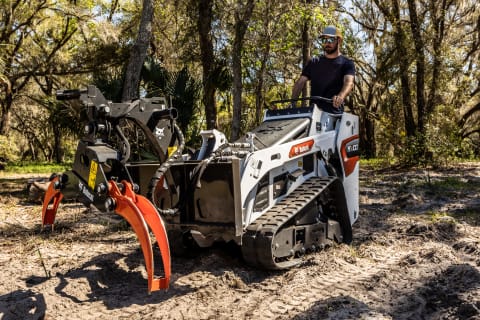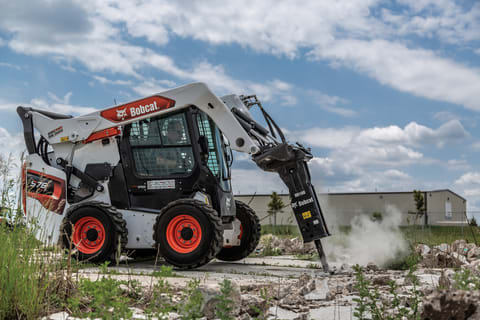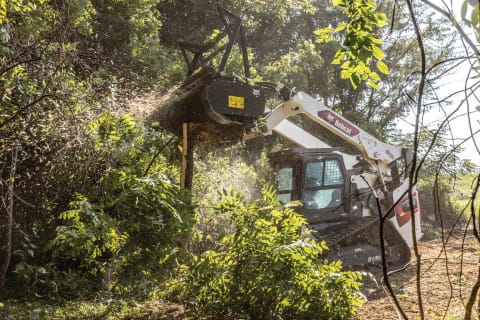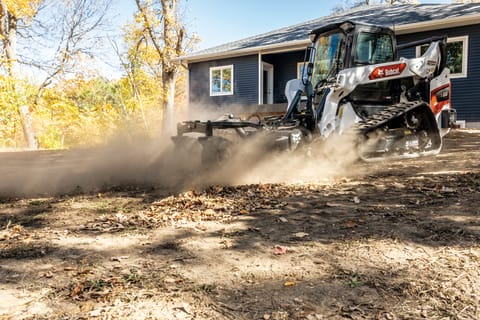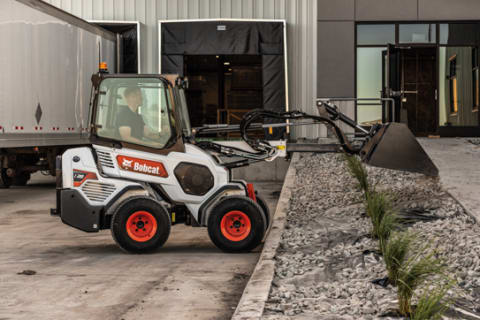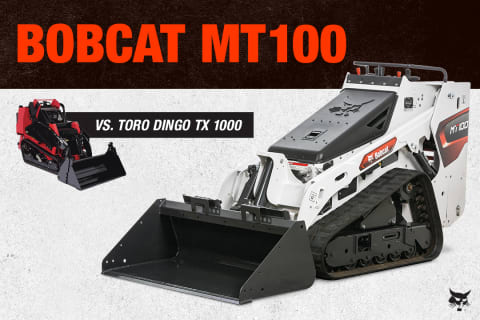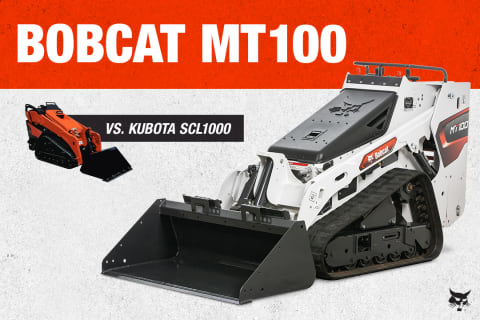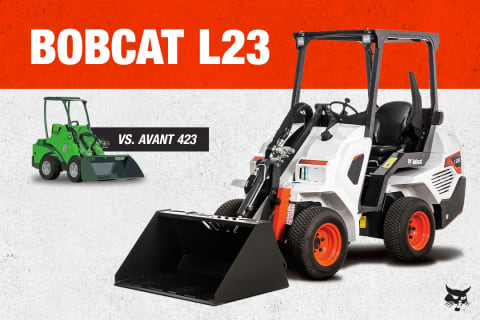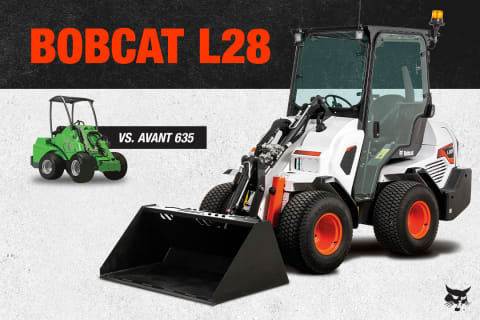- Home
- Buying Resources
- Loaders
- Make Forestry Work Safer With These Bobcat Equipment Tips
Build Your Loader, Get a Free Quote
Customize your loader. Select the model, choose options, and submit to your local dealer for a free price quote.
Build & QuoteMake Forestry Work Safer With These Bobcat Equipment Tips
Posted on January 26, 2021
Forestry work is a unique work environment. Use these tips to help keep your operators safe and your machines protected when operating forestry-clearing equipment.
Summary
Already own a compact loader or mini excavator? Our forestry attachments make it easy to add brush and tree removal to your list of services, eliminating the need for more contractors while boosting your income. Before you start clearing trees though, make sure you’re up to speed on forestry-specific safety measures, including operator training, equipment setup, machine maintenance and jobsite conditions.
Here are the top tips to keep in mind.
Protect the Operator and Your Equipment With Reinforced Windows, Guards and Protective Structures
Your equipment is built tough, but some forestry work requires added protection for the machine and the operator to prevent machine damage and keep operators safe. Enter the forestry application kit. This kit contains components necessary to guard the operator and your machine against flying forestry debris and jill-poke hazards that can get pushed into cab openings or components.
The kit includes:
Level II Falling Objects Protective Structure (FOPS)
A level II FOPS system, which meets ISO 3449 testing, helps protect the operator and cab during overhead work by minimizing the impact from trees and other heavy falling objects. A level II FOPS system is available for both compact loaders and mini excavators.
Polycarbonate Doors and Windows
Replacing standard top, rear and side windows with ¼-inch- to ½-inch-thick polycarbonate provides extra protection from flying debris without sacrificing visibility. Adding a ¾-inch-thick laminated polycarbonate forestry door supplies a tougher defense than a loader’s standard 6mm-thick glass door. An emergency exit feature allows the door to be removed if needed.
Component Guards
The forestry application kit includes several guards to protect machine components from forestry debris and dust. Hydraulic quick coupler guards defend your loader’s couplers, hoses and wire harness from falling trees and branches. A muffler guard protects your tailpipe from damage while also reducing material buildup in the engine compartment. Front and rear light guards protect loader lights from being damaged by sticks and other flying debris.
Engine Compartment Seal Kit
By adding a gasket to each engine compartment opening, the engine compartment seal kit – available on select models – prevents debris such as wood chips and sawdust from entering and causing expensive damage.
Fire Extinguisher
The accumulation of flammable material, such as twigs, leaves and wood chips, inside the machine can cause a fire hazard if not properly maintained. Mounting a fire extinguisher inside the cab allows the operator to quickly reach it during an emergency.
While each item in the forestry kit can be purchased separately, you’ll save money and gain peace of mind by bundling all the correct components together. Remember that some Bobcat® forestry attachments – including the forestry cutter attachment, which can throw debris within 300 feet or more, some of it directed back at the operator – require a complete forestry kit installation before operation.
Your local Bobcat dealer can help you order and install the right forestry kit for your loader model, whether you’re having your loader outfitted with a kit straight from the factory or adding it after-market.
Note that the kit is only available for loaders, but there is a FOPS system available for mini excavators. Because the kit is time-consuming to take on and off, you should plan to keep the forestry kit on your loader once installed. The kit won’t impact your machine’s ability to work on other tasks, but it will add a few inches to its height. Keep this in mind if you work in areas with low overhead clearance.
Engine Compartment Seal Kit
By adding a gasket to each engine compartment opening, the engine compartment seal kit – available on select models – prevents debris such as wood chips and sawdust from entering and causing expensive damage.
Get a Free Price Quote From Your Local Dealer
Find A DealerPerform Regular Forestry-Specific Equipment Maintenance
In addition to your loader’s regular maintenance schedule, there are some forestry-specific tasks you should complete to keep your loader running strong.
Regularly Check for Accumulation of Flammable Material
Leaves, twigs and wood chips need to be cleaned from the machine often. Although the guards included in the forestry application kit help protect against debris, to keep your loader operating at peak efficiency you’ll still need to periodically check couplers, cooling packages and the exhaust system and clear out any material that’s accumulated.
You’ll also want to closely monitor your machine for overheating, which could ignite surrounding wood and start a fire. Always keep a fire extinguisher, included in the forestry application kit, in your machine’s cab.
Remove Rocks and Gravel From Wiper Blades
Sometimes gravel can get kicked up during forestry work. Because polycarbonate windows can be scratched by hard materials, make sure to remove any rocks from wiper blades before turning them on. Likewise, avoid any abrasive cleaning products when wiping loader windows.
Assess Condition of Windows and Doors
If any windows or doors are scratched, cracked or otherwise damaged, talk to your dealer about a replacement. Damaged windows and doors can reduce operator protection or visibility.
Inspect the Condition of the Falling Objects Protective System (FOPS)
This system is designed to protect an operator from heavy falling objects, but it’s not indestructible. Regularly inspect your FOPS to check for damage or loose components that could compromise the system. Your dealer can help with replacement parts.
Request a Demo From Your Local Dealer
Request a DemoStay on Top of Forestry Attachment-Specific Maintenance
Each forestry attachment has its own set of maintenance needs, like lubrication and checking teeth, bolts and retainers for loosening, wear or damage. Replace compromised components as needed. Refer to your attachment’s Operation & Maintenance Manual for specific maintenance tasks required to keep operators safe and machines running efficiently.
Inspect your jobsite for safety hazards
Before starting any forestry work, do a jobsite walk-around to check for potential safety hazards. Note ground conditions both before and during work. If you’re cleaning up after a storm or natural disaster, make sure the area is free of downed power lines, building debris and other dangerous materials.
Wire or rope-like materials that can become wrapped around rotating parts can seriously injure bystanders or damage equipment. Ground that’s soft or that has accumulated wood chips can make the machine unstable when raising attachments overhead.
Depending on the attachment you’re using, wood chips, rocks and other debris can also be thrown hundreds of feet. Make sure there are no bystanders, pets or children in the area who could be injured by the equipment or flying debris.
Understand how to operate forestry attachments
You may be an expert at operating compact equipment, but there are additional skills required to safely operate forestry attachments. If this is your first time using them, we recommend thoroughly reading the attachment’s Operation & Maintenance Manual to get up to speed. And make sure to provide training for all operators who will be running the equipment.
Need help? Your Bobcat dealer can help provide training and note important considerations when operating the attachments, such as how to use the spin-down braking system to ensure the forestry cutter drum is stopped after the hydraulics have been disengaged.
Ready to expand your attachment arsenal now that you’ve gotten these safety tips down? Learn more about our top forestry attachments.
Explore More Loader Resources
View All Articles- Top Attachments for Mini Track Loaders
Top Attachments for Mini Track Loaders
Discover the top attachments from the 24 available for the Bobcat Mini Track Loaders for job-specific landscaping, grounds maintenance and forestry challenges. - Bobcat Attachments for Concrete Work with Compact Loaders
Bobcat Attachments for Concrete Work with Compact Loaders
Learn why Bobcat loaders are the machines of choice for concrete contractors with the productivity increase of Bobcat attachments specifically for concrete work. - How Compact Loaders are Beneficial for Forestry Work
How Compact Loaders are Beneficial for Forestry Work
Learn how Bobcat compact track loaders and skid-steer loaders provide versatility with attachments and machine power to increase your productivity for forestry work. - Landscaping Attachments for Compact Loaders
Landscaping Attachments for Compact Loaders
Explore the top landscaping attachments for your compact loaders, like compact track loaders for versatile productivity and power on the job. - Small Articulated Loaders Productivity for Grounds Maintenance
Small Articulated Loaders Productivity for Grounds Maintenance
Learn about how versatile and powerful small articulated loaders increase productivity and their advantages for ground-maintenance and landscaping professions. - How to Choose Compact Track Loader Tracks
How to Choose Compact Track Loader Tracks
The right compact track loader tracks can improve your machine’s performance, minimize ground disturbance and extend your working season in wetter months. - Bobcat MT100 vs. Toro Dingo TX 1000
Bobcat MT100 vs. Toro Dingo TX 1000
When choosing a mini track loader, it is important to examine key features and benefits. Explore how the Bobcat MT100 stacks up against the Toro Dingo TX 1000. - Bobcat MT100 vs Kubota SCL1000
Bobcat MT100 vs Kubota SCL1000
Every feature and specification matters, to obtain maximum production and output from a mini track loader. Compare the Bobcat MT100 against the Kubota SCL 1000. - Bobcat L23 vs. Avant 423 Small Articulated Loaders
Bobcat L23 vs. Avant 423 Small Articulated Loaders
When choosing a small articulated loader, it can be overwhelming from the options. Explore this comparison of two popular options: the Bobcat L23 and Avant 423. - Bobcat L28 vs. Avant 635 Small Articulated Loader
Bobcat L28 vs. Avant 635 Small Articulated Loader
Small articulated loaders provide impressive lifting capabilities. When looking at the Bobcat L28 compared to the Avant 635, here are some factors to consider.
